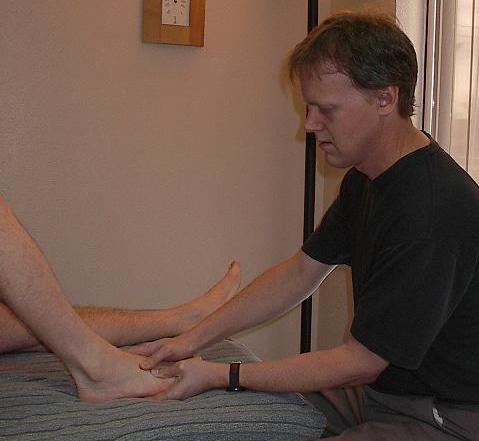Why the ten session series?
The goal of Rolfing is to balance your body’s structure in gravity. To do that, a Rolfer will look at how your entire body has compensated, shortened, and adjusted over time. The ten session format allows us to work comprehensively to deal with those compensations, not just to fix a local problem, but to get at your body’s entire postural pattern. (Click here for more detailed information on the ten session series.)
Do I have to do all ten sessions?
No. You can try a session to see if Rolfing is for you. Some people come for two or three sessions and get what they wanted to achieve. If you choose to do fewer sessions than the entire series, you and your Rolfer can come up with a strategy to get the maximum benefit out of the number of sessions that you can do. Also, some clients with chronic problems choose to extend their Rolfing beyond the original series. It is up to the Rolfer and client to create an approach suited to that client.
Are the changes permanent?
Ida Rolf claimed that once a person’s body was more balanced in gravity, that gravity would help to reinforce the new posture and the changes wouldn’t fade away with time. What we’ve all found is that the changes gained during Rolfing are long-lasting for most people – you won’t need to keep re-doing the process.
If you continue to put new stress on your body (for example, continue to sit at the same computer desk, or continue the same physical activity), you might want a session now and then to make sure that you body doesn’t start to compensate for the strain again.
Does Rolfing hurt?
You might experience a burning sensation or soreness at times during a session (similar to the soreness you might feel when tight muscles are massaged.) At other times, the contact might feel neutral or pleasant. Early on, Rolfing developed a reputation as a painful, if effective, process. Over time, the Rolfing community has developed the work to be as (and in some cases, more) effective, while working at levels that are more comfortable to the client. In short, most new clients who are worried about Rolfing being painful cease to have that be an issue after experiencing a session.
How is Rolfing different than massage?
Traditionally, massage has focused on relaxing and releasing short-term tension or stress. Rolfing is more focused on changing chronic patterns of tension, and on making postural changes that will be long-term in nature.
Also, massage has traditionally focused more on the muscular system, and the type of touch has been consistent with relaxing muscles. Rolfing is working on another type of tissue, fascia. Fascia is distinct from muscle and responds best to a different type of touch. The pace and feel of a Rolfing session is very different than a massage.
Is Rolfing “deep tissue therapy”, or “myofascial therapy”?
 Currently more and more manual therapists work with fascia. “Deep tissue work”, “myofascial release”, and “myofascial therapy” are a few of the names given to such work. What distinguishes Rolfing is not the medium in which we work but the goals of our work – organizing the body in gravity. Releasing tight tissue is a method we use, but not the goal itself. The goal is a balanced body that functions in an easier and more efficient way.
Currently more and more manual therapists work with fascia. “Deep tissue work”, “myofascial release”, and “myofascial therapy” are a few of the names given to such work. What distinguishes Rolfing is not the medium in which we work but the goals of our work – organizing the body in gravity. Releasing tight tissue is a method we use, but not the goal itself. The goal is a balanced body that functions in an easier and more efficient way.
How is Rolfing different than chiropractic?
Ida Rolf was influenced by chiropractic in developing her work, in particular the chiropractic observation that structure (your form) determines function (how you feel, how well your body works). Traditional chiropractic has had as its focus the skeletal system. She was most interested in the system of fascia – she believed that a majority of the time, the skeletal system was being pulled out of place by soft tissue, and so she focused her attention on the soft tissue (myofascia) instead.
My experience (and that of every Rolfer I know) is that chiropractic and Rolfing can work well together and are complementary disciplines.
Does Rolfing have psychological benefits?
Rolfing can have significant effects on the whole person, affecting emotions, perceptions of body image, attitudes, etc. For some people, the physical holding patterns they have adopted can be related to emotional holding or tension. For others, their structure may carry the effects of emotional or physical trauma. Rolfing can help shift the physical effects of trauma or emotional holding patterns and can be useful as a complement to psychotherapy or personal development work.

